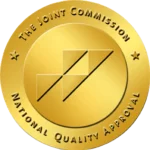What Is Suboxone?
Suboxone is a prescription medication used in the treatment of opioid addiction. It comes in the form of tablets and dissolvable films.
Suboxone is composed of two active ingredients, the opioid antagonist naloxone, and the opioid buprenorphine.
Opioid antagonists block opioid receptors and therefore work against the effects of opioids. For that purpose, naloxone alone is used in emergencies to reverse the effects of an opioid overdose.
Buprenorphine, an opioid, is used to reduce opioid withdrawal symptoms and induce a measure of euphoria, while still blocking the mechanism of any other opioids, such as heroin or fentanyl. Without the presence of naloxone to block opioid receptors, however, buprenorphine would function the same as other opioids and carries the same risk of abuse, addiction, and overdose as all opioid medications do.

 While some
While some  At
At 



